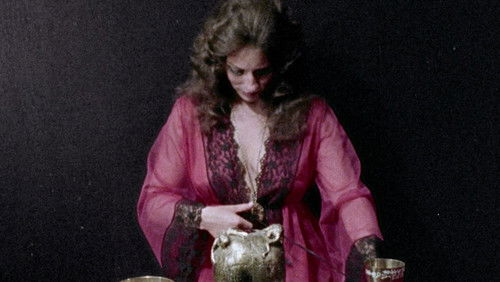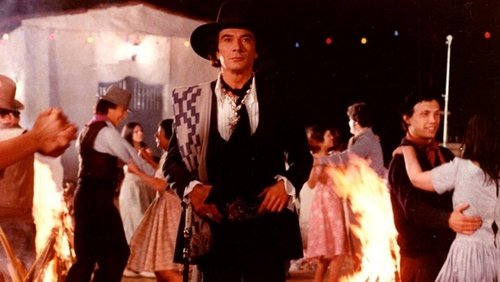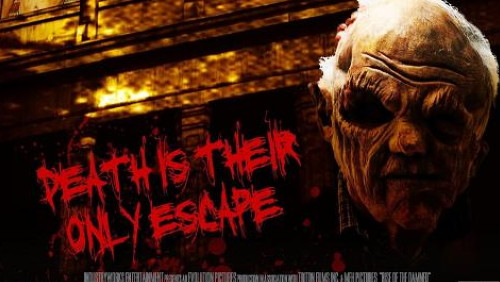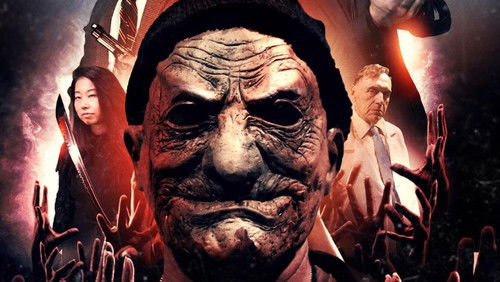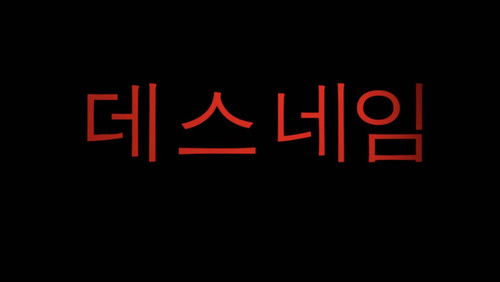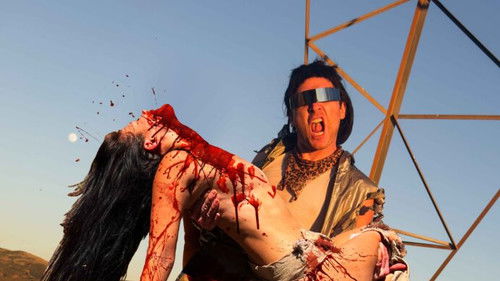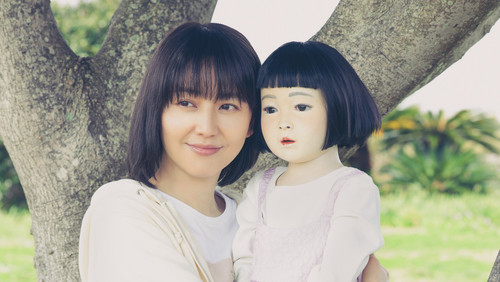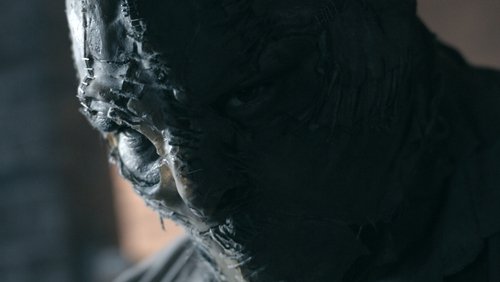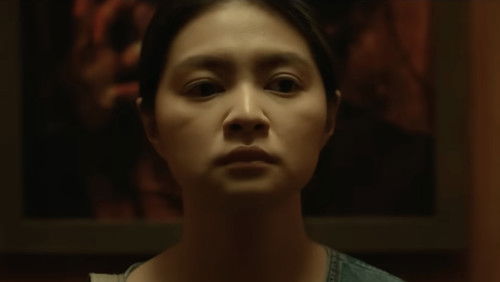La fille de Dracula (1972)
14KLa fille de Dracula: Directed by Jesús Franco. With Carmen Yazalde, Anne Libert, Alberto Dalbés, Howard Vernon. Luisa visits her dying mother at Karlstein Castle. Before she dies, she tells Luisa that the Karlsteins are a family of vampires and that her ancestor, the original Count Karlstein, lies buried in the crypt.
“I came to this film with high expectations and, though I can say that I liked it overall, I also couldnu0026#39;t help feeling that it didnu0026#39;t quite realize its full potential. For starters, it keeps shuffling between several genres (horror, erotica, giallo) but ends up not satisfying the u0026#39;requirementsu0026#39; of any of them! u003cbr/u003eu003cbr/u003eThe horror elements of the film are, at best, arbitrary merely a springboard for plot development (or what passes for it) and the overall u0026#39;looku0026#39; of the picture: Howard Vernon, for one, as an amusingly unhealthy-looking Dracula (photographed from odd angles to give some dimension of menace to his part) is horribly misused; just why is he confined to his coffin in the family crypt especially since he doesnu0026#39;t take advantage of the situation when the door is finally unlocked?! While Britt Nichols (ostensibly the lead but whou0026#39;s kept off-screen for the longest time!) makes a truly fetching vampire lady, unfortunately she doesnu0026#39;t invest her role with the requisite magnetism that Soledad Miranda brought in spades to VAMPYROS LESBOS (1970) or even a tragic disposition which would have made us care for her fate; Mirek described her performance as u0026#39;self-consciousu0026#39; and u0026#39;awkwardu0026#39;, and I agree completely. By the way, does Vernon turn her into a vampire, or is she one all along, as the opening sequence seems to suggest, or am I missing something here?!u003cbr/u003eu003cbr/u003eThe giallo references, then, feel almost like an afterthought even if like most other elements in this film, they seem to be direct lifts from the directoru0026#39;s own THE SADISTIC BARON VON KLAUS (1962), a film which Iu0026#39;m now more eager than ever to check out, if mainly for the sake of comparison. Still, if handled differently, the figure of the masked assailant might have proven interesting not to mention serve the purpose of injecting some much-needed suspense into the fray: as it stands, this aspect is considerably dissipated because Franco lingers on his shots for far too long! My friend Francesco Cesari considers the two main lesbian sequences of this film to be his favorites in the entire Franco canon; well, the two actresses obviously looked great without any clothes on but, for the life of me, I didnu0026#39;t find the scenes to be at all erotic merely very clumsily staged! Whatu0026#39;s more, this shouldnu0026#39;t be attributed to how far one could go at the time since LES DEMONS, released the same year, is a lot more explicit; in the end, Iu0026#39;d have to say that I now prefer the frank, no-holds-barred footage to be found in, say, LORNA THE EXORCIST (1974): even if this tended to overwhelm the plot somewhat, at least, here itu0026#39;s genuinely titillating and certainly a lot more gratifying to the viewer since itu0026#39;s clear that this is what Franco wanted to do all along!u003cbr/u003eu003cbr/u003eAs for the numerous investigation scenes, while I agree that they break the mood of the often lyrical scenes at Castle Karnstein, I didnu0026#39;t find them to be overly annoying and certainly not unnecessary. They tried to give some weight to a virtually non-existent plot and, in any case, Jess Francou0026#39;s own characterization as the mysterious solicitor/vampire expert Cyril Jefferson contrasted well with the almost boorish Inspector (never actually mentioned by name, as far as I can recall, but is credited as Ptushko, perhaps a nod to Russian fantasy film-maker Aleksandr Ptushko which I find very amusing!) played by Alberto Dalbes. Besides, the fact that most of them seem to occur over drinks at the village pub provides a welcome touch of absurdity to the proceedings! Still, the film gets to conclude on a whimper which hurts the overall effort: not only is the climax over in no time (much like the finale of the Browning/Lugosi Dracula [1931], curiously enough) but, to be honest, if I hadnu0026#39;t read on this very board that Britt Nichols was supposed to be occupying that second coffin in the cellar (since we never get to see her in it in the first place), I wouldnu0026#39;t even have noticed that the u0026#39;female vampireu0026#39; had been destroyed too! Basically, it all boils down to the extremely hurried production and that, given more time, it would undoubtedly have turned out a more substantial offering, possibly among the directoru0026#39;s greatest work.u003cbr/u003eu003cbr/u003eHowever the film does have an intermittent sense of style which, even if not quite reaching the haunting, dream-like quality of A VIRGIN AMONG THE LIVING DEAD (1971), at least it emerges as a very acceptable mood-piece. Its main fault, to my eyes, is the sluggish pace: I didnu0026#39;t really mind it during the filmu0026#39;s first half but, after an hour had gone by and pretty much nothing had changed (or was likely to), I surrendered myself to the fact that THIS was as good as it was going to get! This trend in Francou0026#39;s film-making habits, rigorously defended by his supporters as the manu0026#39;s lack-of-respect for cinema conventions, is labeled incompetence by many but I prefer to call it a certain laziness on his part, as though he was concerned with only a few key scenes in any one film while not giving a damn about the rest no wonder he finds so little satisfaction in his work and, consequently, tends to dismiss it!!u003cbr/u003eu003cbr/u003eDespite its propensity for the zoom (nothing new here), the filmu0026#39;s widescreen camera-work is, in fact, workmanlike abetted by attractive Portuguese locations and an effective color scheme especially during the vampire attacks or when prowling the castle interiors. There seems to be some debate over who really composed the music score: while on a first listen, I canu0026#39;t say that it was particularly memorable, it certainly did its job; I listened to only a few snippets of the newly-recorded score included on the Spanish soundtrack, but Iu0026#39;ll make it a point that the next time I watch the film Iu0026#39;ll choose this version.u003cbr/u003eu003cbr/u003eTo get to the rest of the cast, Anne Libert (who I have so far liked best in A VIRGIN AMONG THE LIVING DEAD and LA MALEDICION DE FRANKENSTEIN [1972/3]), as well, didnu0026#39;t have much of a part: she has been described as Nicholsu0026#39; slave, but thatu0026#39;s stretching it a bit, I would say she seems perfectly willing to be u0026#39;influencedu0026#39; by her and, in any case, itu0026#39;s not like sheu0026#39;s ordered to do her bidding or anything. For instance, in the scene where the nosy journalist (whom Libert seems to fancy) tries to get an interview with Max Karlstein (Daniel White) suspected of the vampire killings and is u0026#39;receivedu0026#39; by a furious Nichols, whereupon she turns on Libert, I didnu0026#39;t feel that she acted in this way out of jealousy but merely to save her own skin. Daniel Whiteu0026#39;s character is interesting but he, too, is underdeveloped: his relationship with the bartenderu0026#39;s wife (well played by Yelena Samarina, whose character grows more important as the story goes along) unfolds in a credible fashion; however, one gets to know next to nothing about his personal feelings regarding the curse that seems to hang over his family!u003cbr/u003eu003cbr/u003eAs for the DVD itself, the video quality is far from perfect but not distractingly so. The audio, too, is serviceable, i.e. not much more than could be expected. The numerous trailers and u0026#39;alternateu0026#39; credits sequence were nice to have, if nothing more. The most important extra, clearly, is the 15-minute interview with the director himself, which is pretty good, though I lost him completely near the end due to his thick-accented English! Still, I would have preferred to hear him discuss what LA FILLE DE Dracula meant to him in the context of his massive filmography rather than where it was shot and other production details. Also, Iu0026#39;m baffled by how Franco can say that he finds Dracula to be an interesting character when he gives him absolutely nothing to do in this film still, I guess I should reserve judgment until after Iu0026#39;ve seen Dracula, PRISONER OF FRANKENSTEIN (1971) Finally, a word about the large, book-like DVD cover: it does look beautiful, even if being obviously bulky and thus tends to incongruously stick out amidst my collection (the same goes for the LES DEMONS 2-Disc Set)!”

